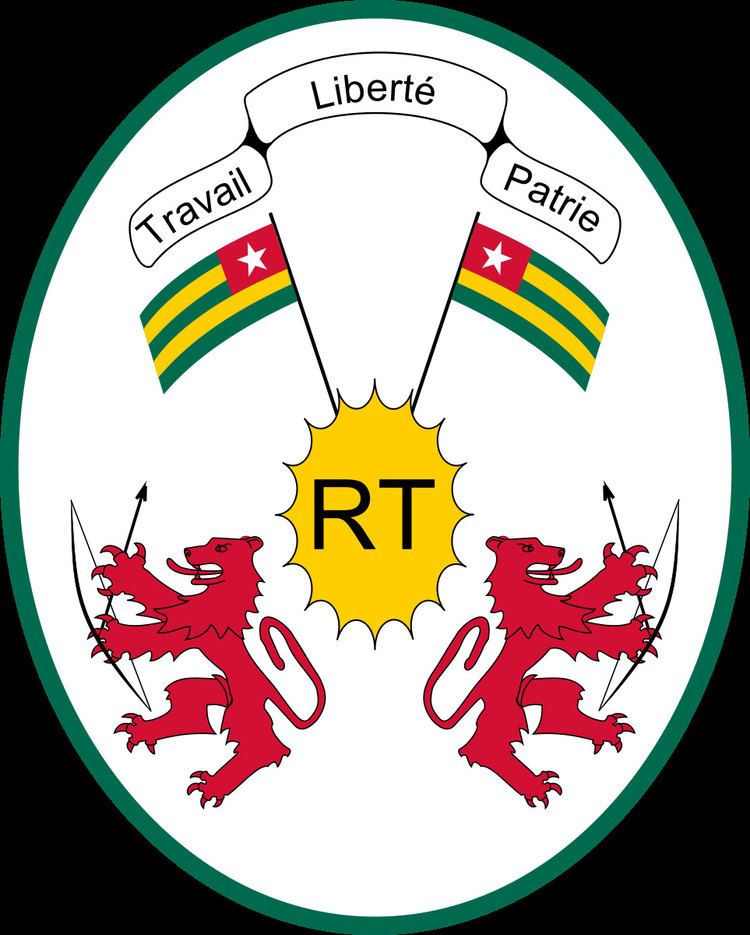Armiger Togolese Republic | Adopted 14 March 1962 | |
 | ||
Crest Two Flags of Togo and a standard on each side and a ribbon argent with the National Motto. Escutcheon A shield or with the letters RT (République Togolaise) sable. Supporters Two lions rampant gules each of them holding an arrow in dexter hand and a bow in sinister hand sable. Motto Travail, Liberté, Patrie
"Work, Liberty, Fatherland" | ||
The national emblem of Togo was adopted on 14 March 1962.
In the device, there are two red lions to be seen, which symbolize the bravery of the people. The bow and arrow call for all citizens to be active in the defense of freedom of the country. Between the lions is a golden shield with the letters RT (République Togolaise) to be seen. Above the flag of Togo is displayed twice. On the ribbon stands "Travail, Liberté, Patrie" (Work, Liberty, Homeland).
After Togo's 1991 National Conference, multiple versions of this emblem proliferated, even within the Togolese government. In June 2008, however, a Constitutional Court decision clarified which version was correct.
Proposed arms 1914
In 1914, the German government decided to assign coats of arms to its overseas colonies, including Togoland. Arms were designed, but World War I broke out before the project was finalised, and the arms were never actually taken into use. Giving the colonies their own insignia in time of war could let them have a symbol to rally around in case of rebellion. The arms proposed for the Protectorate of Togoland depicted a tree supported by two cobra snakes and the German imperial eagle on a chief. The eagle and the imperial crown on the shield was the same for all the proposed colonial arms.
See also coats of arms of German colonies.
